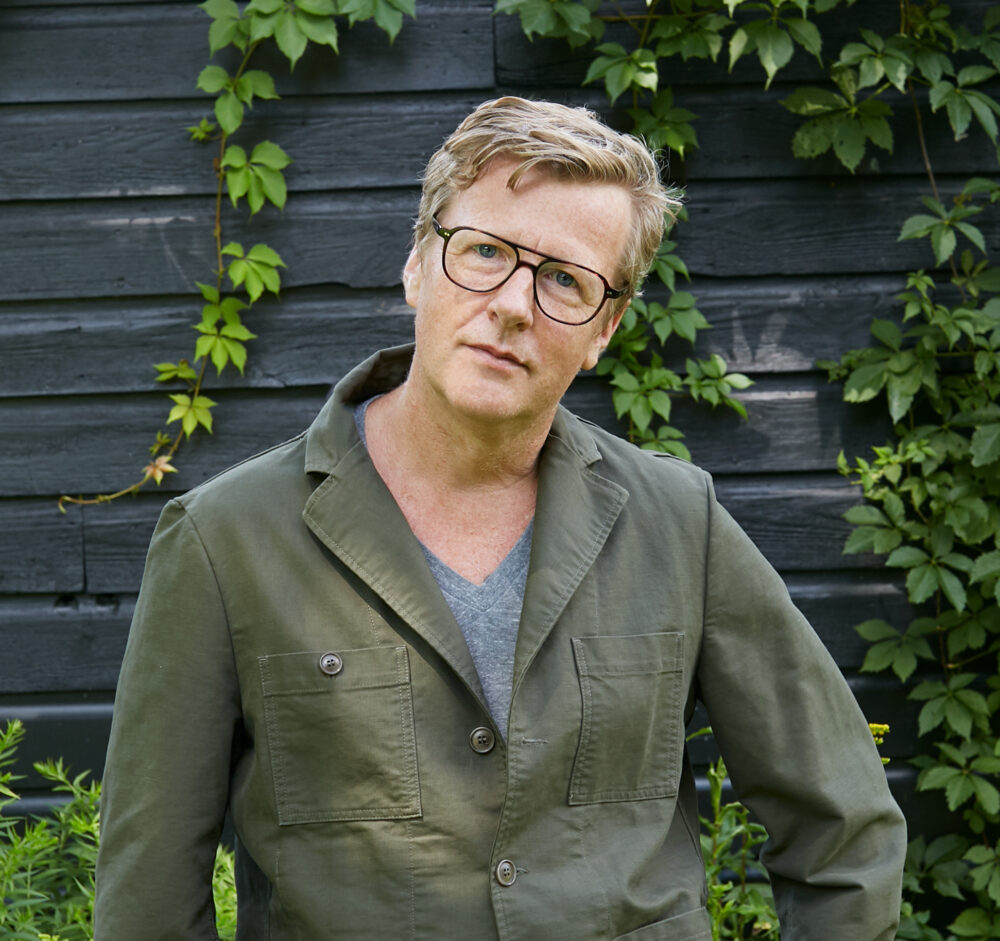
On page 38 of Making Conversation, Fred Dust tells us:
After the death of my brother—a chef with a chef’s propensity for late-night tattoos—I chose to get a tattoo as a way to keep him close: I wanted the single word brave above my heart, where I would see it daily.
What would I say if I could say only one word, but say it forever? What could I write down that would convey, unmistakably: I was there, with you; you were here, with me? When should our most treasured words be covered, held close? When should they be seen and touched? When should they be shared?
The central work of our lives is conversation. For many of us, too, conversation is the central work of our work. Expanding the frame of how we have conversations is like standing in a field of gray and learning to see colors.
Try asking for the conversation you want.
It is hard to imagine seven more useful words. Here we are, early in the book, caught up in the tumult of things—Fred’s in the middle of moving into his first New York apartment, he’s broken all the building’s rules, and here’s his downstairs neighbor, going full-on New York, reading him the riot act—and all of a sudden Fred’s saying:
“Is this really the way we want to start our conversation?”
“No,” she said, “it isn’t.”
This is the art of the pause, stepping for a moment above the crashing momentum with which we carry ourselves away from whatever our intention might have been if we’d taken the time to form an intention.
How many conversations have you had—conversations that matter, with people that matter—that you know could have had a different tone? A different feeling? And yet we let them go wrong, despite our instincts. Often the tone of a conversation is an unconscious reaction to a situation, or to the first few moments of the interaction. And then we find ourselves trapped, with the conversation unfolding around us, determined by what we feel in that moment rather than what we want or need to accomplish.
Asking for the conversation you want is, in a certain sense, an interruption. Yes, interrupting for the wrong reasons, gracelessly, is like stomping one’s muddy boot on the slippered foot of a small child. But intentional, generous interruption? Fred gives us playwright Lisa Kron’s formulation: interruption in theater is “a purposeful change of energy.”
It is hard to imagine what more powerfully drives performance in any human endeavor than the capacity purposefully to change energy when energy needs changing. One should gladly exchange a pound of one’s most valued professional skill for an ounce of such capacity.
In a recent interview, I found myself undertaking to understand the essential lessons from a twenty-five-year professional arc in about fifty minutes. The night before, trying to prepare, I leafed back through Geoff Smart and Randy Street’s classic Who: The A Method for Hiring. They warn:
You have to interrupt the candidate. There is no avoiding it…. It may feel rude to interrupt somebody who is enthusiastically telling you a story about that smelly pig farm in Kentucky that was right next to the corporate offices. However, we think it is rude to let somebody ramble. It hurts their chances of having time to cover important events in their career. So interrupt the person once you think they are going off course. You will have to interrupt the candidate at least once every three or four minutes, so get ready.
…. The good way to interrupt somebody is to smile broadly, match their enthusiasm level, and use reflective listening to get them to stop talking without demoralizing them. You say, “Wow! It sounds like that pig farm next to the corporate office smelled horrible!” The candidate nods and says “Yes!” and appreciates your empathy and respect. Then you immediately say, “You were just telling me about launching that direct mail campaign. I’d love to hear what that was like? How well did it go?”
It is through maintaining very high rapport that you get the most valuable data, and polite interrupting can build that rapport.
Replaying the inner tape, I’d give myself a “C” on interruption. 100% of my interruptions served the mutual goal of maximizing insight per minute while building a relationship. Several interruptions I didn’t make cost something like a quarter of the fifty minutes available for the main purpose of the meeting. I was being a superficially generous listener, while in fact taking the twenty-dollar bills of the candidate’s time with me, and slowly, gingerly burning them to ash.
Every good no is in service of a higher yes. A decent, purposeful interruption is in service of the advance it seeks to make room for. Often making an advance requires taking the edge off our hunger for closure, thinning out the crowdedness of our thoughts, clearing the way for what we don’t yet know. Fred writes:
We too often prize decisiveness in leadership. We have inherited a belief that leadership is about fast and confident decision-making rather than deliberation and reflection. The phrase “any decision is better than no decision” feels intuitively right, even though—if you stop and think about it—any decision is clearly not better than no decision. When we make conversation, we’re ultimately aiming not necessarily for action but advancement. Moving an idea forward, exploring that idea, but not necessarily just making it happen.
Most truly important goals can be reached only after a long series of advances. It is certainly true that not to act is fatal. Discovery favors the actor in motion, not the pedant fastened to his desk. But it is nearly as great a mistake to treat the first advance as sufficient, leaping to regard as a full answer what should better be understood simply as a clue to a next move.
Fred teaches us conversations that create change are like a pilgrimage.
The basic tenets that underlie all pilgrimage, sacred or not, are simple. The singular point to pilgrimage is that you are going to a holy place, a place that has some form of sanctity and spiritual meaning. This means the path of the pilgrim is directional; there is only forward.
Pilgrims are expected to endure some form of hardship and some form of a journey. Pilgrimage removes one from daily life and daily experience. Finally, a pilgrimage ends with a unifying of the many into one. The most common metaphor is the language of water: brooks join to streams, which join to rivers, and finally, as Martin Luther King Jr. put it, into a “giant wave of people.”
The pilgrim, in every story, proceeds by wandering as well as striving, and often what appear to be the deflections end up becoming the hinges of the journey. In the conversations that so often matter most in organizations, conversations about strategy, what’s hard is figuring out how to be at once seeking and purposeful.
So often, organizations embarking on strategy don’t pause to consider deeply what is the conversation that we truly need to have. They surface a lot of facts and write detailed plans, but the work is neither purposeful nor seeking. As a result, they alter their direction in small, predictable ways, the managerial equivalent of the bored driver responding to the voice on his GPS intoning “in three hundred feet, bear right.” Contrast this experience Fred shares:
About fifteen years ago I got a call from a senior executive at the Ritz-Carlton. They wanted to develop a new service practice that they could roll out across their system. Specifically, they wanted a service experience that a guest would feel, but not necessarily put their finger on, something you couldn’t quite articulate. This was in an era when other hotels were branding their sleep experiences or inviting celebrity chefs to run their restaurants…. In a moment when everyone was watching for a competitive move, Ritz-Carlton wanted a service experience to be tangible but too subtle to be copied.
It would have seemed impossible, if they hadn’t given this nonexistent service model a name.
These executives were calling the service initiative “scenography,” despite the fact that they had no idea what they meant by the word. Scenography typically refers to stagecraft in the theater, but in this case, they wanted nothing that was staged, no scripts, and they certainly did not want it to be too easily recognizable. The name was so compelling because it hinted at the potential of a solution. The name hinted at a vision; it suggested to us the characteristics, if not the final form of the thing we were looking for.
Pilgrims on our separate and shared journeys, we progress by holding the balance between pursuit and wandering, flowing and pausing, the conversation we know we want and the conversation we don’t yet know we need. To hold this balance, we must carefully choose our constraints. Constraints anchor conversation.
In the field of strategy, one of the simplest and most practical framing of constraints I’ve ever heard was from my colleague Ken Favaro, formerly CEO of Marakon and then a fellow Senior Partner at Booz & Company. Ken taught me how all the complexities of strategy can be distilled into five conversations, each with its own distinct focus and its own distinct constraints. Putting the essence of Ken’s teaching, with his bolded terms, into my own words:
- First, have a conversation about what are the facts of the business, and in this conversation, resist debate regarding what to do about these facts.
- Then have a conversation that distills from these facts a list of the issues and opportunities the facts imply. Facts live independently of us; facts just are. Issues and opportunities convey what those facts mean for us.
- Having constructed a list of issues and opportunities, in a third conversation generate at least three compelling strategic alternatives. Do not settle for two contrasting alternatives and a compromise in the middle. Each of the alternatives needs to embody its own logic. In the third conversation, do deliberate on the basis for evaluating alternatives, but don’t debate which of the alternatives is best.
- In a fourth conversation, drive to a strategic decision: which alternative is best. Entertain the possibility that there might be a hybrid that is superior to any of the pure alternatives, but don’t compromise as a way to gain agreement.
If it is difficult to come to an agreement, understand precisely what’s driving disagreement—is it a difference in the weighting of goals? Diverse beliefs about potentially knowable facts? Divergent expectations for the future? Opposing views regarding the organization’s own capabilities and ability to execute a strategy? As needed, set up further conversations focused exclusively on those root issues that need to be resolved in order to align. - Only begin planning after a decision regarding strategy has been made, captured in brief, tight reasoning that all participants can understand. At that point, embark on a fifth conversation about how to build a strategic plan that flows from the essential choices that have already been made.
Progressing through the pentathlon of these five conversations well—recognizing that each conversation is its own athletic event, that requires its own training and conditioning—is as sure a recipe as this uncertain world can offer for addressing the big questions an enterprise faces.
Conversation is as frail as life.
Thirty years after first reading it, I still shiver as I recall a certain moment in R. D. Laing’s The Divided Self, a book that lives up to the statement on the back of my paperback edition that the book’s “first purpose is to make madness and the process of going mad comprehensible.”
An argument occurred between two patients in the course of a session in an analytic group. Suddenly, one of the protagonists broke off the argument to say, “I can’t go on. You are arguing in order to have the pleasure of triumphing over me. At best you win an argument. At worst you lose an argument. I am arguing in order to preserve my existence.”
Pathology shows us, stripped bare, aspects of our everyday selves we might rather look past. Reading these words, perhaps we think first to our current political moment, but we might equally see the conversations that run through our organizational lives. Here’s Nobel Prize winner Herbert Simon in Reason in Human Affairs, writing about the ordinary course of decision-making in organizations:
The organization is never deciding what it purports to be deciding. The curriculum committee’s formal question is whether requiring course X or course Y would be better for some group of students. What is really debated is how requiring course X or course Y would affect the number of faculty slots in departments A and B.
Imagine a conversation characterized by a truth serum level of forthrightness with an executive in the upper reaches of a large enterprise, leader of a business unit or a major function, and a participant in the shaping of strategy for the enterprise. She might say:
My ability to deliver results centrally depends on the attention and confidence of my peers, and the resources they’re persuaded to allocate to my agenda.
Every conversation, whatever else it might be about, is fundamentally about this. Will my work be valued? Will I get what I need? Will others erect barriers that stand between me and what I’ve promised to deliver?
In other words: I am arguing to preserve my existence.
In order to have effective conversations about strategy, the leaders of an enterprise must first learn to argue in a different way. Creating psychological safety is one frame for this, and a useful one. And yet, in the poet W. H. Auden’s words, in order for strategy to confront reality “our dream of safety has to disappear.” Great strategic conversations both stretch and support, nourish, and confront.
In the midst of a chapter on Creative Listening, Fred evokes the feeling of reading through a medieval manuscript, turning the pages with linen gloves, and coming upon a small image: an illumination. Great moments in conversation have this quality of an illumination—small, simple, and utterly surprising—a crystallization of emotion in a story. Fred writes:
A story needs to end, and an illumination ends when you discover the insight, not when you finish something. Find the truly revelatory piece of your story and make that where your story stops.
Turning the pages of Fred’s book is a reminder of the moment when a marriage becomes a marriage, long before the formality of proposal and acceptance: the moment when it dawns that this is a conversation that demands a lifetime.
Late in his life, Robert Lowell wrote a poem called Epilogue:
Those blessèd structures, plot and rhyme—
why are they no help to me now
I want to make
something imagined, not recalled?
I hear the noise of my own voice:
The painter’s vision is not a lens,
it trembles to caress the light.
But sometimes everything I write
with the threadbare art of my eye
seems a snapshot,
lurid, rapid, garish, grouped,
heightened from life,
yet paralyzed by fact.
All’s misalliance.
Yet why not say what happened?
Pray for the grace of accuracy
Vermeer gave to the sun’s illumination
stealing like the tide across a map
to his girl solid with yearning.
We are poor passing facts,
warned by that to give
each figure in the photograph
his living name.
In our organizations, in our polity, and in our daily lives, this is our work: to say what happened; to reach beyond our blessèd structures and honor each living name.
This is our work, largely to be fulfilled or squandered through the quality of our conversations.
This is the work our lives depend on, such that perhaps in the end, if we converse well with one another and with ourselves, we will have succeeded in making something imagined, not recalled. And perhaps, with grace, we will find that the words written above our hearts have become the through-line of our days.



